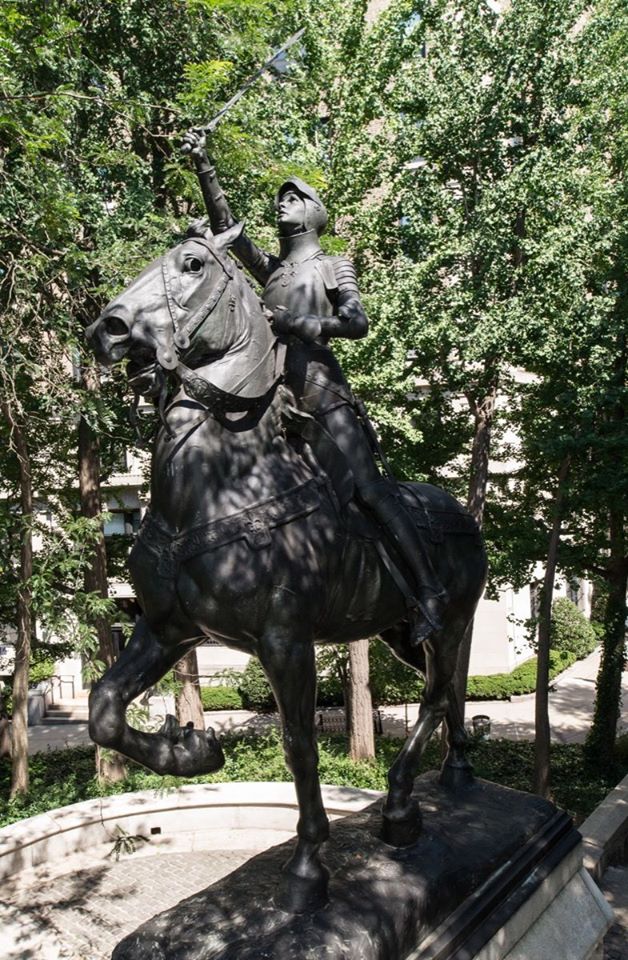Misplaced by History, Artists Worth Knowing: Anna Hyatt Huntington
Anna Hyatt Huntington (1876-1973) was a prolific and innovative American sculptor best known for her equestrian statues. She was the first woman artist to be elected to the American Academy of Arts and Letters. She was also a philanthropist who along with her husband, helped found nearly 20 museums and wildlife preserves as well as America’s first sculpture garden.
Huntington’s father was a noted paleontologist and professor of zoology at Harvard University, her mother, an amateur landscape. Influenced by them, Huntington acquired both an extensive knowledge of the anatomy and behavior of animals and an enthusiasm for drawing. She had a special affection for horses and made her first clay models of them as well as other domestic animals.
Initially, Huntington studied violin at a private school and spent several years training to become a professional concert violinist. At the age of 19, while suffering from an illness, Huntington helped her sister repair the broken foot on a sculpture her sister had produced. Pleased with the results, her sister asked her to collaborate on a sculpture which included the family dog. Huntington’s sculpture was accepted for exhibition by one of the national art societies, and purchased. This was the impetus to turn away from the violin and pursue studies under the Boston portrait sculptor, Henry Hudson Kitson. Her first one-woman show, held at the Boston Arts Club, consisted of 40 animal sculptures. After the death of her parents, Huntington moved to New York, to continue her studies.
Attending the Art Students League, she studied with three sculptors, most notably Gutzon Borglum, the designer of Mount Rushmore. Preferring to work independently, Huntington left formal instruction in favor of direct observation. Over the next few years, she spent much of her time at the Bronx Zoo, refining her technique and becoming a master of naturalistic animal sculpture.
By 1907, Huntington felt confident enough in her abilities to travel to Europe and pursue her work independently. She took a studio in France and later in Italy, her work becoming larger in scale. Huntington had long dreamed of producing a life-sized equestrian statue of Joan of Arc. She traveled to Rouen and other places Joan had lived, searched the streets of Paris for the right kind of horse and brought it to her studio. Working ten hours a day she completed the work in four months. It was a stunning success, awarding Huntington a Chevalier of the Legion of Honor from the French government.
Throughout this period, Huntington received several other commissions and honors, raising her career to new heights. In 1912, she was one of only 12 women in the U.S. making at least $50,000 a year. In 1923 Huntington married railroad heir and philanthropist Archer Milton Huntington, who shared her cultural interests and desire to give back to the community.
From the mid-1920s on, Huntington battled tuberculosis, reducing her output. In 1930, the Huntingtons purchased approximately 7,000 acres of former plantation land in the coastal region of South Carolina. It provide a milder winter climate for her illness and Huntington was able to resume work. Part of their estate was opened to the public in 1932 as Brookgreen Gardens. It featured numerous works by Huntington and became the first modern sculpture garden. During the Depression, the Huntington’s supported struggling sculptors whose work dotted the Brookgreen landscape.
Huntington recovered from tuberculous and resumed work at a fever pitch. In 1936, the American Academy of Arts and Letters held a retrospective exhibition of 171 of Huntington’s works in New York. She enjoyed solo exhibitions and her work toured the United States through 1938 and 1939. With the advent of abstract sculpture in the 1950s, Huntington’s more traditional, academic style fell out of favor, much to her dismay. She referred to modernism “as an overwhelming flood of degenerate trash drowning sincere and conservative workers in all the arts.” Undaunted, she continued to work, producing even larger pieces.
Following her husband’s death, Huntington returned to sculpture full-time and continued to work well into her 80’s. On her 90th birthday in 1966 she was still working, reportedly on a bust of the composer Charles Ives. Huntington died in 1973 at the age of 97. Active for 70 years, she is recognized today as one of America’s finest animal sculptors, whose naturalistic works helped to bridge the gap between the traditional styles of the 1800s and the abstract styles of the mid-20th century.


